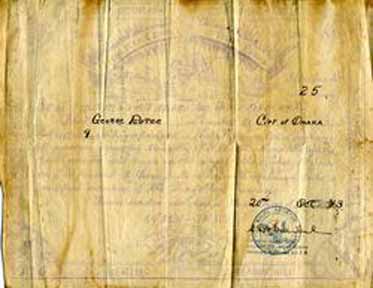The story of the "forgotten convoy" to North Russia was told today by the War Shipping Administration..It all happened last year and hundreds of American merchant seamen will not soon forget their experience when, after a rough and. hazardous two-month voyage on the tough Murmansk run, they were "lost" for eight months in arctic North Russia.
In January, 1943, six United States merchant ships sailed out of New York harbor, carrying vital food and. war materials. They joined about 18 merchant vessels of other Allied nations to make up a convoy which didn't return for nearly one year.
The trip across was slow, because of severe storms and freezing weather. The storms didn't let up until the convoy was off the coast of Norway, but when the weather did clear, Nazi bombs and. bullets replaced the wind, rain and hail. For two days the convoy was subjected to relentless air attack. Several ships were damaged, and some undoubtedly would have been sunk if the German raids could have continued. But on the third day the storms started again, and the attacks ceased.
On March 2 - - just two months after the ships left New York - - the battered convoy arrived at its North Russia destination. Cargo was unloaded and the crews settled. down to await formation of a new convoy for the return trip.
Had. they known then what awaited them, most of the seamen probably would have started swimming toward the Statue of Liberty.
For eight long months the crew members and officers stayed in a small Russian factory town. For about six of these eight months, the men lived in constant daylight, because it was the period of the year when there is no darkness in the Arctic Circle.
As the men's patience wore thin, they sought entertainment. They found. that two dances were held each week in the town, but for several weeks they were unable to gain admittance, because none of the crew members could talk Russian. Finally they found an interpreter, who volunteered to arrange dates for them with Russian girls and then stood by to interpret what was said.
Later, to overcome their boredom, the seamen started hitchhiking around the country. Some went as far as 200 miles from their port. By this time, they knew a smattering of Russian, and their interpreter lost his job, because "two's a party and three's a crowd."
In September, a return convoy was made up. The American ships sailed back into New York harbor approximately one year from the day they sailed out.
In recognition of the tough time they had, the U. S. Naval Attache at the Russian port where they spent the eight long months issued to each men of the American crews a certificate attesting to his membership in the "Society of the Forgotten Convoy of North Russia." The certificates bear the seal the United States Embassy and the signature of the Naval Attache.A typical certificate was issued to Third. Engineer Philip N. Enegess, aboard one of the American ships. Enegess, who is from West Newton, Mass., and who is a graduate of the United States Merchant Marine Academy at Kings Point, New York, proudly displays the following award:
"Be it known to all men by these presents: That Philip N. Enegess on board the SS City of Omaha, did suffer eight months confinement in North Russia and did undergo all privations connected therewith, that he did shiver through the Arctic and bask in the rays of the midnight sun, and by virtue of these facts is herewith declared to be a certified member of the Forgotten Convoy."
Forgotten Convoy CertificateThe City of Omaha is operated for the War Shipping Administration by Lykes Bros. Steamship Co., Inc., New Orleans, La. The other five vessels of the "forgotten fleet" and their operators were the:
Thomas Hartley: Merchant and Miners Transportation Co., Baltimore, Md.
Francis Scott Key, Lykes Bros. Steamship Co., Inc., New Orleans, La.
Beacon Hill, Standard Oil Co. of New Jersey, New York City
Bering, Alaska Packers Association, San Francisco, Calif.
Israel Putnam, North Atlantic & Gulf Steamship Co., Inc., New York City.- - - 0 - - -
The six ships sailed from Loch Ewe, Scotland in Convoy JW 53 on February 15, 1943, experiencing extremely bad weather which also kept the enemy at bay. The convoy arrived in Kola Inlet in two groups, on February 2 and March 2. While in Kola, they experienced heavy air raids, especially in March and April. The ships left Kola Inlet on November 1, 1943 in Convoy RA 54A, returning to Loch Ewe on November 14. The convoy encountered heavy fog, which shielded it from enemy forces.Woodman, Richard. Arctic Convoys: 1941-1945. London: John Murray Publishers, 1994
Ruegg, Bob and Hague, Arnold. Convoys to Russia: 1941-1945. Kendal, England: World Ship Society, 1992
Certificate image from Ebay02/26/07
www.USMM.org ©1998 - 2007. You may quote small portions of material on this website as long as you cite American Merchant Marine at War, www.usmm.org as the source. You may not use more than a few paragraphs without permission. If you see substantial portions of any page from this website on the Internet or in published material please notify usmm.org @ comcast.net
